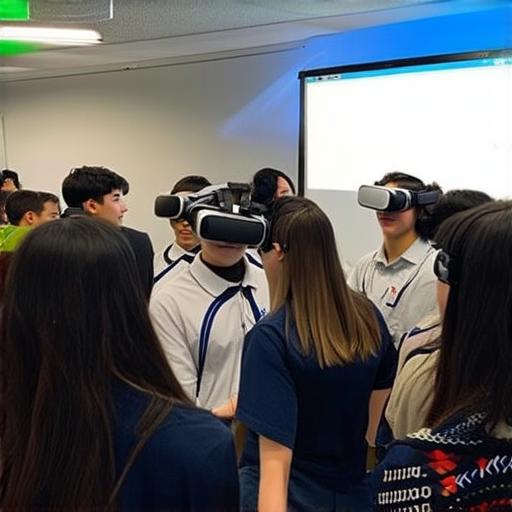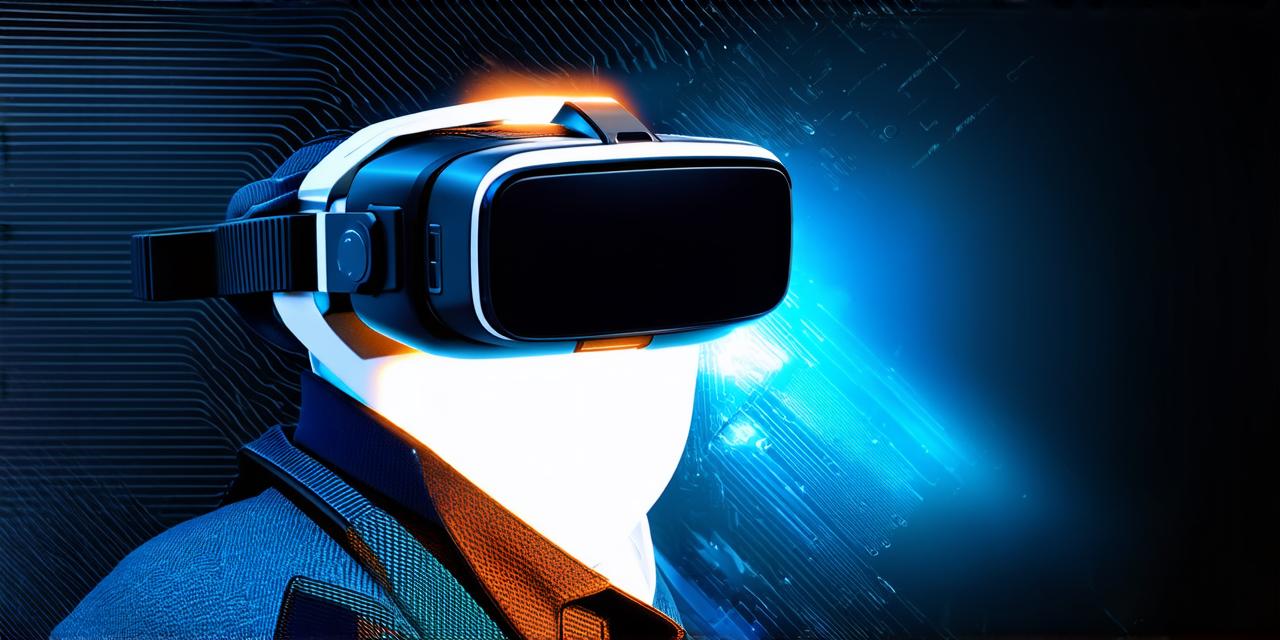Introduction:
Virtual reality (VR) is quickly becoming an integral part of education, providing immersive and interactive learning experiences that traditional classroom settings can’t replicate. In this article, we will explore how VR technology is transforming the way students learn, the challenges it presents, and how developers can leverage its potential to create innovative and effective educational tools.
The Advantages of Virtual Reality in Education:
- Enhanced Engagement:
One of the most significant advantages of using VR in education is that it increases engagement. Students are more likely to stay focused on their studies when they are immersed in a virtual environment. This can lead to better retention and understanding of material. - Immersive Learning Experiences:

Virtual reality allows students to experience real-world scenarios in a safe and controlled environment. For example, medical students can practice surgeries, while engineering students can design and test their creations virtually. This provides a unique opportunity for hands-on learning that is not possible in traditional classrooms.3. Increased Accessibility:
Virtual reality technology can make education more accessible to students who may not have access to traditional classroom settings. For example, students living in remote areas can take virtual field trips or participate in online classes. This can help bridge the gap between students from different backgrounds and provide equal opportunities for learning.
Case Studies:
Let’s look at a few examples of how VR is being used in education:
1. Google Expeditions:
Google Expeditions is a free app that allows teachers to take their students on virtual field trips to over 900 locations around the world. Students can explore museums, historical landmarks, and natural wonders from the comfort of their classrooms. This has been shown to increase student engagement and motivation.
2. Tilt Brush:
Tilt Brush is a VR painting tool that allows students to create 3D models and sculptures in a virtual environment. This can be used to teach students about art, design, and engineering. For example, architecture students can use Tilt Brush to design and test their building designs virtually before constructing them in the real world.
3. Anatomy:
Virtual reality technology is being used to teach anatomy in a more immersive and interactive way. Students can explore the human body in 3D, allowing them to see and interact with organs and systems in a way that is not possible with traditional textbooks or diagrams. This can help students better understand complex concepts and retain information more effectively.
Challenges:
While virtual reality technology offers many benefits for education, there are also challenges that need to be addressed. These include:
1. Cost:
Virtual reality technology can be expensive, and not all schools have the budget to invest in VR equipment and software. This can create a digital divide between students who have access to VR technology and those who do not.
2. Limited Content:
There is currently limited content available for virtual reality education, which can limit its potential. Developers need to create more educational content that is engaging, informative, and accessible to students of all ages and backgrounds.
3. Technical Issues:
Virtual reality technology can be complex and prone to technical issues. This can disrupt learning and make it difficult for students to focus on the material. Developers need to ensure that their VR tools are user-friendly and reliable.
How Developers Can Leverage Virtual Reality in Education:
Despite the challenges, virtual reality technology offers a wealth of opportunities for developers to create innovative and effective educational tools. Here are some tips for leveraging VR in education:
1. Collaborate with Educators:
Developers need to collaborate with educators to understand their needs and develop content that is relevant and engaging for students. This can involve conducting user testing, gathering feedback, and incorporating expert insights into the development process.
2. Focus on Accessibility:
Virtual reality technology should be accessible to all students, regardless of their background or location. Developers need to consider the needs of students with disabilities and ensure that their VR tools are inclusive and user-friendly.
3. Create Engaging Content:
Virtual reality content should be engaging and informative, providing students with immersive and interactive learning experiences. Developers need to use storytelling, gamification, and other techniques to make their VR tools more appealing and effective.
4. Monitor and Evaluate:
Developers need to monitor the effectiveness of their VR tools and evaluate their impact on student learning. This can involve collecting data on engagement, retention, and other metrics, and using this information to improve their VR tools over time.
Conclusion:
Virtual reality technology is transforming education in many ways, providing immersive and interactive learning experiences that traditional classroom settings can’t replicate.
